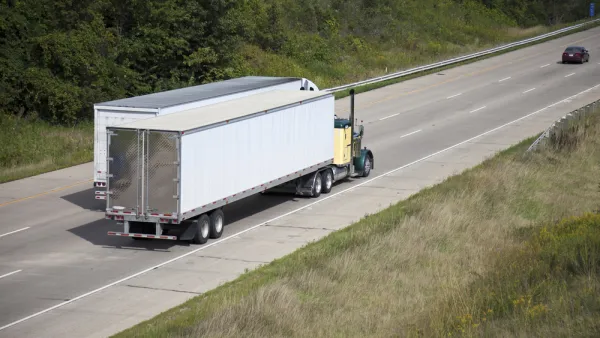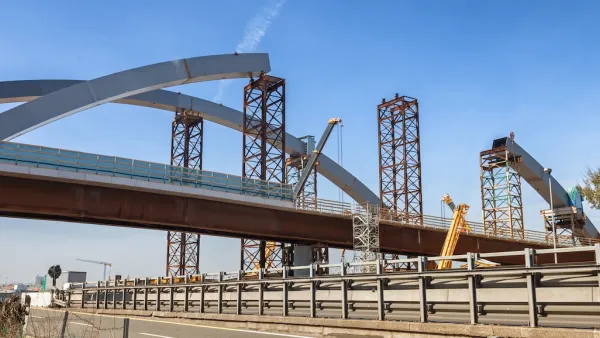All but nine states have decreased the number of "structurally deficient" bridges since the 2007 Minneapolis bridge collapse. That improvement, however, is far from permanent. Can the federal government and states maintain their progress?
"The number of bridges considered to be in the worst shape has declined in the vast majority of states — all but nine — in the years since a Minneapolis bridge collapse brought national attention to the America’s decaying bridges," reports Daniel Vock.
"All told, the number of 'structurally deficient' bridges dipped by 14 percent in the last six years. But even with the improvement, one in 10 bridges in the country is still considered structurally deficient."
The article credits public attention after the Minneapolis bridge collapse, as well as federal policies to better manage the inventory of bridges and roads, with the improvement.
But, "[the] federal surface transportation law expires this fall, and federal transportation money to states may dry up even before that. If Congress does not find the money to continue or increase current funding levels, the number of troubled bridges could start climbing again."
The article also includes a state-by-state breakdown of where the improvements have been most, or least, profound.
FULL STORY: Under Scrutiny, States Trim List of Bad Bridges

National Parks Layoffs Will Cause Communities to Lose Billions
Thousands of essential park workers were laid off this week, just before the busy spring break season.

Retro-silient?: America’s First “Eco-burb,” The Woodlands Turns 50
A master-planned community north of Houston offers lessons on green infrastructure and resilient design, but falls short of its founder’s lofty affordability and walkability goals.

Delivering for America Plan Will Downgrade Mail Service in at Least 49.5 Percent of Zip Codes
Republican and Democrat lawmakers criticize the plan for its disproportionate negative impact on rural communities.

Test News Post 1
This is a summary

Test News Headline 46
Test for the image on the front page.

Balancing Bombs and Butterflies: How the National Guard Protects a Rare Species
The National Guard at Fort Indiantown Gap uses GIS technology and land management strategies to balance military training with conservation efforts, ensuring the survival of the rare eastern regal fritillary butterfly.
Urban Design for Planners 1: Software Tools
This six-course series explores essential urban design concepts using open source software and equips planners with the tools they need to participate fully in the urban design process.
Planning for Universal Design
Learn the tools for implementing Universal Design in planning regulations.
EMC Planning Group, Inc.
Planetizen
Planetizen
Mpact (formerly Rail~Volution)
Great Falls Development Authority, Inc.
HUDs Office of Policy Development and Research
NYU Wagner Graduate School of Public Service




























